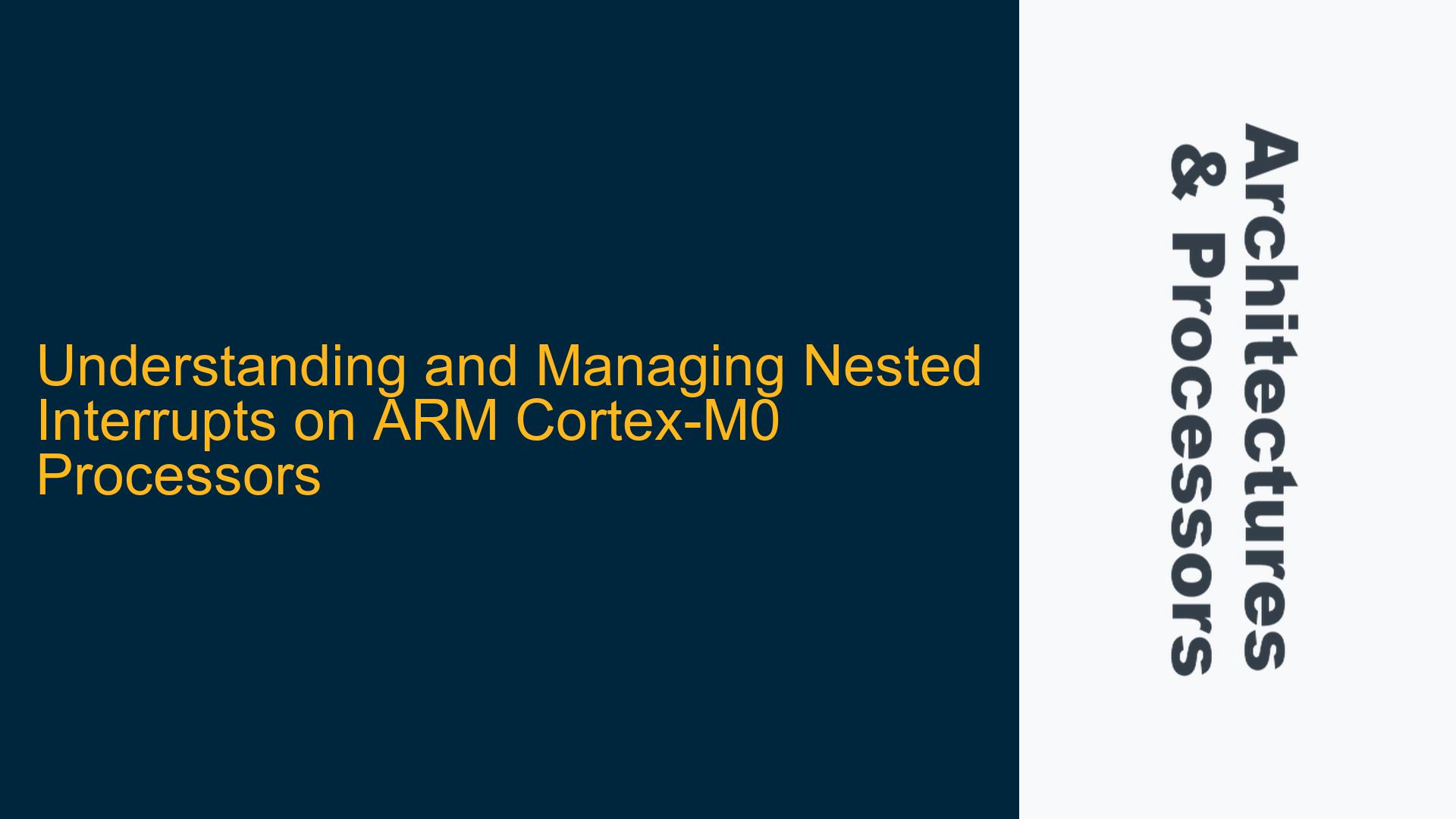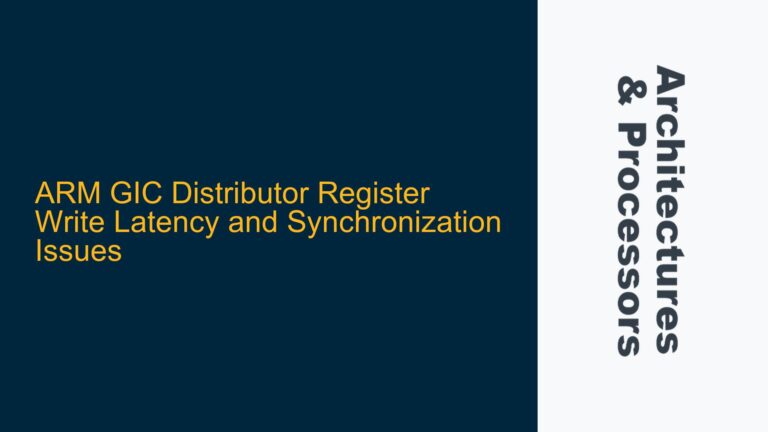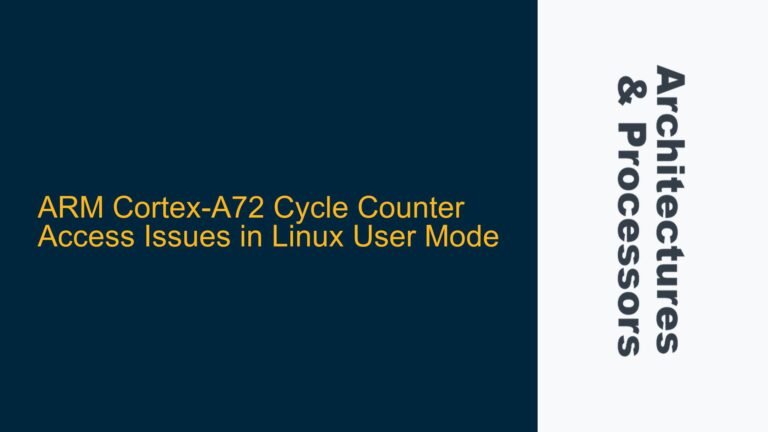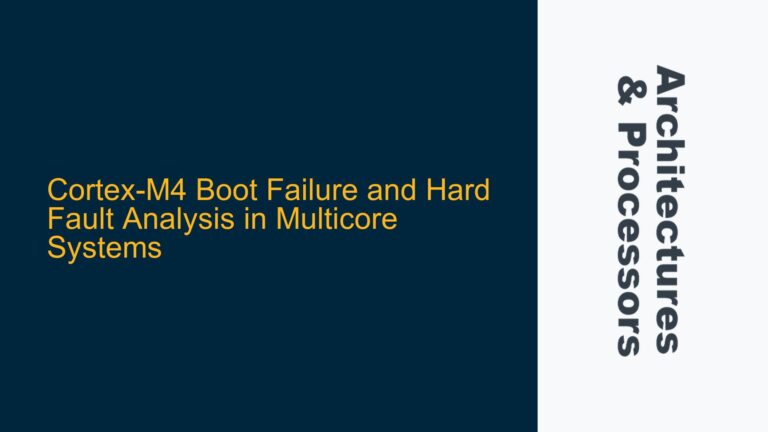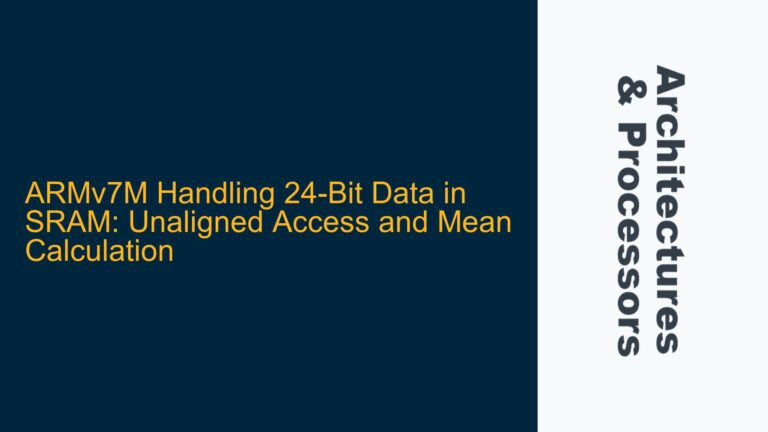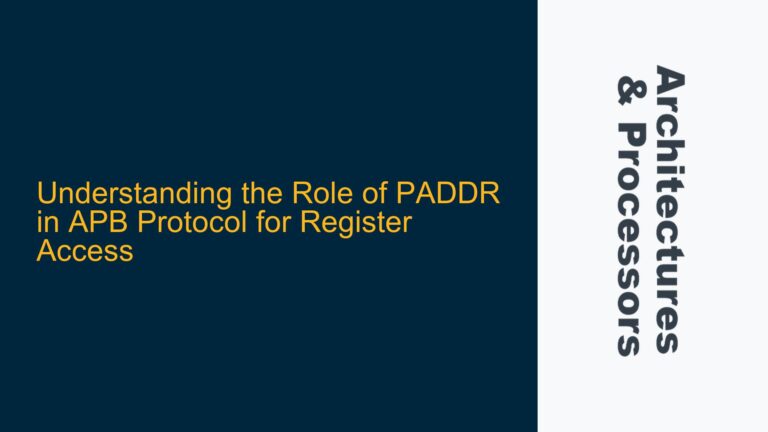ARM Cortex-M0 Nested Interrupt Mechanism and Its Implications
The ARM Cortex-M0 processor, being one of the most widely used 32-bit microcontrollers, is designed with a simplified interrupt handling mechanism compared to its more advanced siblings like the Cortex-M3 or M4. One of the key features of the Cortex-M0 is its support for nested interrupts, which allows higher-priority interrupts to preempt lower-priority ones. However, this feature can sometimes lead to complex scenarios in real-time systems where deterministic behavior is crucial. Understanding how nested interrupts work on the Cortex-M0, and how to manage or disable them, is essential for developers working on time-critical embedded applications.
The Cortex-M0 uses a Nested Vectored Interrupt Controller (NVIC) to manage interrupts. The NVIC supports up to 32 interrupt inputs, each with a programmable priority level. When an interrupt occurs, the NVIC compares its priority with the current execution priority. If the new interrupt has a higher priority, the processor will save the current context and switch to the interrupt service routine (ISR) of the higher-priority interrupt. This mechanism is known as nested interrupts. However, the Cortex-M0 does not provide a direct way to disable nested interrupts globally. Instead, developers must use specific techniques to control interrupt nesting behavior.
The primary challenge with nested interrupts on the Cortex-M0 is ensuring that critical sections of code are not interrupted by higher-priority interrupts, which could lead to race conditions or data corruption. Additionally, improper handling of nested interrupts can result in increased latency for lower-priority interrupts, making it difficult to meet real-time deadlines. Therefore, understanding the underlying mechanisms and available control options is crucial for effective system design.
PRIMASK Register and Interrupt Priority Configuration as Key Control Mechanisms
The Cortex-M0 provides two primary mechanisms for controlling nested interrupts: the PRIMASK register and interrupt priority configuration. The PRIMASK register is a single-bit register that, when set, disables all interrupts except for Non-Maskable Interrupts (NMIs) and HardFaults. This register is often used to create critical sections in code where interrupts must be temporarily disabled to ensure atomic operations. However, using PRIMASK to disable interrupts globally is a blunt instrument, as it affects all interrupts and can lead to increased interrupt latency.
Interrupt priority configuration, on the other hand, offers a more granular approach to controlling nested interrupts. Each interrupt source in the Cortex-M0 can be assigned a priority level, with lower numerical values indicating higher priority. By configuring all interrupts to the same priority level, developers can effectively prevent nested interrupts, as the NVIC will not preempt an ongoing ISR with another interrupt of the same priority. However, this approach has limitations, as it does not prevent interrupts with higher priority levels (e.g., NMIs or HardFaults) from preempting lower-priority interrupts.
Another important consideration is the interaction between the PRIMASK register and the BASEPRI register. While the Cortex-M0 does not have a BASEPRI register (unlike the Cortex-M3/M4), understanding its role in more advanced ARM cores can provide insights into interrupt management strategies. The BASEPRI register allows developers to mask interrupts below a certain priority level, providing a more flexible way to control nested interrupts. Although this functionality is not available on the Cortex-M0, it highlights the importance of priority-based interrupt management in ARM architectures.
Implementing Critical Sections and Priority-Based Interrupt Management on Cortex-M0
To effectively manage nested interrupts on the Cortex-M0, developers must implement a combination of critical sections and priority-based interrupt management. Critical sections are portions of code where interrupts are temporarily disabled to ensure atomic operations. These sections are typically implemented using the PRIMASK register. For example, the following assembly code snippet demonstrates how to disable and enable interrupts using PRIMASK:
CPSID I ; Disable interrupts by setting PRIMASK
; Critical section code
CPSIE I ; Enable interrupts by clearing PRIMASK
While this approach ensures that no interrupts will occur during the critical section, it can lead to increased interrupt latency and should be used sparingly. A more refined approach involves configuring interrupt priorities to minimize the need for critical sections. By assigning the same priority level to all interrupts, developers can prevent nested interrupts without disabling interrupts globally. However, this approach requires careful consideration of the system’s real-time requirements and the relative importance of different interrupt sources.
In systems where certain interrupts must have higher priority, developers can use a combination of priority configuration and critical sections to achieve the desired behavior. For example, high-priority interrupts can be assigned a lower numerical priority value, while lower-priority interrupts are assigned higher values. Critical sections can then be used to protect shared resources accessed by both high- and low-priority interrupts. This approach ensures that high-priority interrupts can still preempt lower-priority ones when necessary, while minimizing the risk of race conditions.
Another important consideration is the use of the NVIC’s interrupt pending and active status registers. These registers allow developers to query the status of interrupts and manage their execution more effectively. For example, if a high-priority interrupt is pending while a lower-priority interrupt is being serviced, the developer can choose to delay the execution of the high-priority interrupt until the critical section in the lower-priority ISR is complete. This technique requires careful management of interrupt priorities and status registers but can provide a more deterministic behavior in complex systems.
In conclusion, managing nested interrupts on the ARM Cortex-M0 requires a deep understanding of the processor’s interrupt handling mechanisms and available control options. By using a combination of the PRIMASK register, interrupt priority configuration, and careful management of critical sections, developers can achieve the desired level of control over nested interrupts. While the Cortex-M0 does not provide the same level of flexibility as more advanced ARM cores, it is still possible to implement effective interrupt management strategies that meet the requirements of real-time embedded systems.
